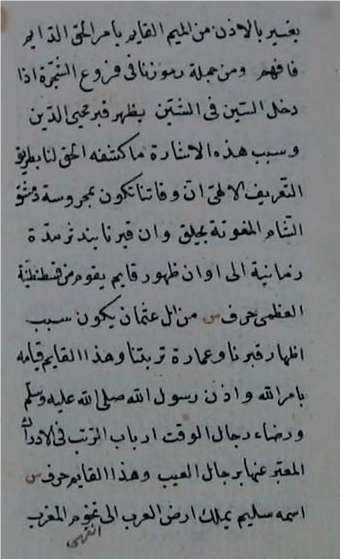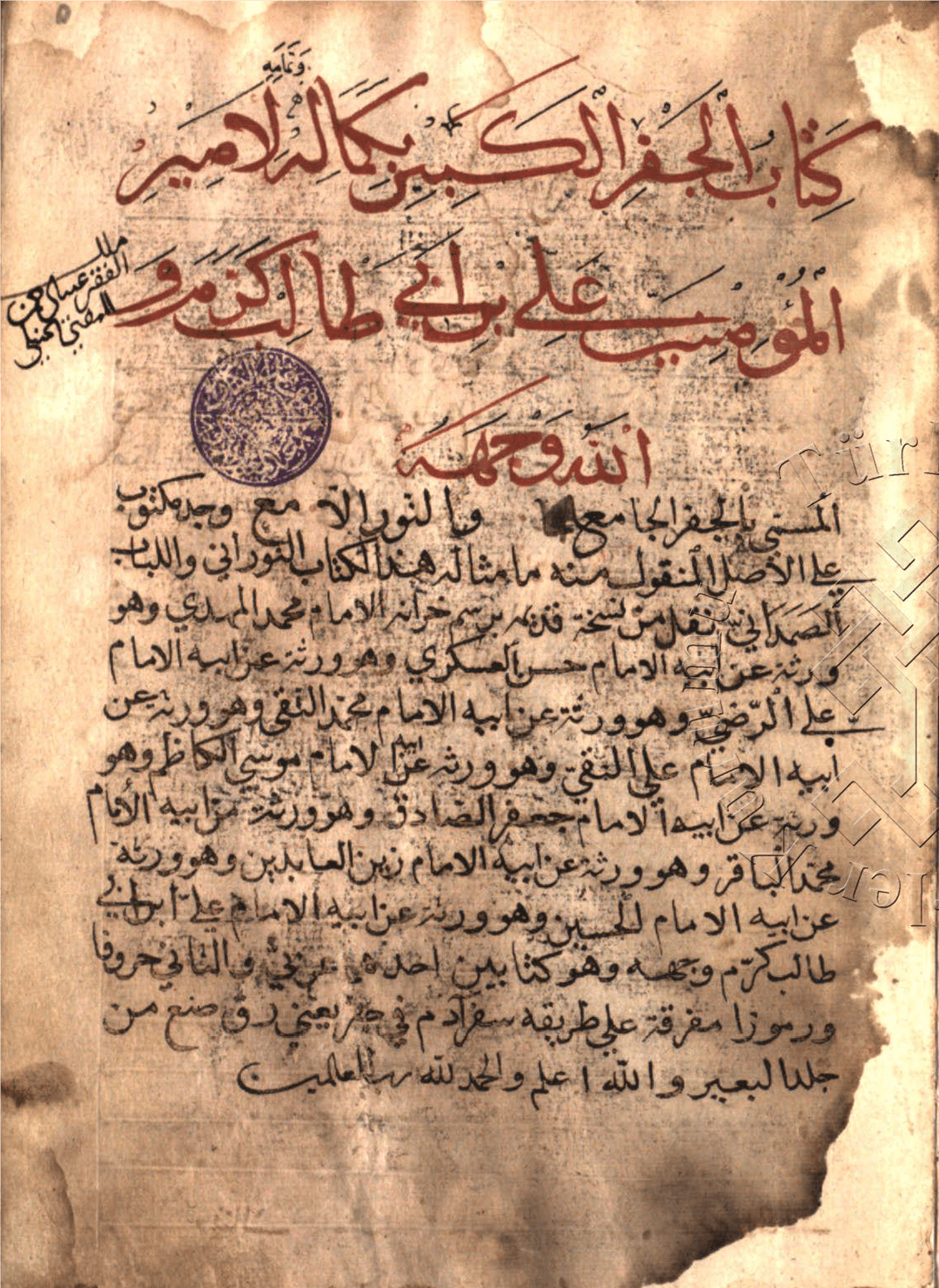By W. Sasson Chahanovich
Why should we care about the author? The answer to this question is not self-evident. While Roland Barthes may have declared the “death of the author” over half a century ago, the author as existential personhood, as cultural celebrity, and as value marker still lives on in both critical theory and in historical research (Barthes, “La mort de l’auteur”). This is what Michel Foucault identified as “author function,” by which he means that the author as ‘name-on-work’ can have more relevance beyond identifying an historical individual or limiting the parameters of what we today call intellectual property (Foucault, Aesthetics, Method, and Epistemology, 205–222). While the problem of the author has made much methodological headway in fields like the Classics, Jewish and early Christian studies, and literary theory, Islamic intellectual history still lacks a systematic assessment of the concept of the author (e.g. kātib, mu’allif). Moreover, no research exists on the topic of ‘forgery,’ i.e. pseudepigraphy, which is the much-maligned twin of the canonical notion of the trustworthy author.
Specifically, Classicists still remind us that Homer qua actual historical ‘author’ may be fiction. Yet so they also problematize the issue of authorship by simultaneously noting that, while an unknown composer ‘penned’ the textual artifacts known as The Iliad and The Odyssey, Homer’s name still has value; it limits the meaning of the text. Likewise, historians of Christianity point out time and again the many forgeries (10 to 13) present in the New Testament. They are also quick to point out that this evidently has had little effect on the faith communities who accept them as inspired works. As Karen King notes, “while they, too, were not indifferent about false attribution and forgery, their concerns pertained to authority, prestige, and character rather than to modern economic and legal considerations…”(King, “‘What Is an Author?’,” 17).
In contrast, only a handful of Islamic historians have touched on pseudepigraphy or ‘forgery,’ a normative epithet that should be applied cautiously. This is remarkable given the spans of the textual archive of Islamic intellectual history. After all, three of its major written languages – Arabic, Persian, and Ottoman Turkish – functioned as the authorial/scribal language from the Atlantic to Central Asia. Even in the earliest days of Orientalistik, philologically minded German scholars largely ignored the question of authorship. Not even Ignaz Goldziher or Theodor Nöldeke, two of the leading names in the early days of Islamwissenschaft,debated the value of falsified texts. Only the canonical literature counted.
Only more recently have some scholars taken up this neglected field, especially concerning pseudepigraphy. For example, Roberto Tottoli has discussed the eschatological corpora commonly mislabeled as the Conditions of Resurrection (Aḥwāl al-qiyāmah) (Tottoli, “Muslim Eschatological Literature,” 452-477). Michael Pregill has analyzed the early, biblically infused Islamic legend-cum-homiletic material known as the isrā’iliyyāt. In particular, Pregill revisits the “function” of the names of several early, well-attested transmitters and their biographies as Jewish converts to Islam (Pregill, “Isrā’īlliyāt, Myth, and Pseudepigraphy,” 220). In a confessional context, the authorial identity of these names weighs heavy on the concept of religious truth. Gabriel Said Reynolds has addressed the Islamic polemic of Jewish and Christian “distortion” (taḥrīf) of their own holy scriptures. Thus, Muḥammad and the compilers of the Qurʾān-qua-codex implicitly move onto the historical stage as the most trustworthy authors and editors. Historians of Islam stand to enrich our understanding of scientific and cultural output if they were to investigate the modes of authorship and its mutations across genre, linguistic idiom, and cultural context.
The archive of Islamic intellectual history has much more to offer us that remains entirely untouched. Pseudepigraphic material and even outright forgeries are abundant, especially in the early modern period. For example, in the Süleymaniye Archival Library in Istanbul, two copies (Mss. Ayasofya 2246 and 2247) exist of an anti-trinitarian polemic titled the Kind Response (al-Radd al-ğamīl), which is attributed to Abū Ḥāmid al-Ġazālī (d. 1111). This is none other than the clerical curmudgeon and author of the Incoherence of the Philosophers (Tahāfut al-falāsifah), who is popularly held to have killed Islamic philosophy. Even august Islamic scholars like Louis Massignon and A.J. Arberry took the attribution at face value and promoted the text as a bona fide part of al-Ġazālī’s oeuvre (Massignon, “Le Christ dans les evangiles selon al-Ghazālı̄,” 523-536; Arberry, Aspects of Islamic Civilization, 300-307). Yet an examination of the manuscript quickly throws the certainty of its authorship into question. If we cannot definitively ascertain the authorship, what resonance did al-Ġazālī’s name have for the readers of this text? For now, it is safe to assume that the great theologian’s name exhibited an appeal, much like that of a Paul of Tarsus, that enhanced the theological importance and historical weight of the text.

In a similar vein, there existed a whole cottage industry of pseudepigraphic authors and misattributions surrounding the name of Islam’s most famous Sufi master, Ibn al-ʿArabī (d. 1240). One of the most widely circulated and commented works by these anonymous authors was The Tree of Nuʿmān (al-Šağarah al-nuʿmāniyyah, see Fig. 1). This eschatological and esoteric work not only prophesies the End of the World, but it also identifies the Ottoman sultans as the gatekeepers of the Resurrection. Whoever the real author was, the authorial motivation was in part practical. The prophecy received a wider readership and greater credibility with the name of Ibn al-ʿArabī backing it up. Thus, one may speak, as Laura Nasrallah has done, of both al-Ġazālī and Ibn al-ʿArabī as having lived “authorial afterlives”; the specter of their names lingers down the halls of reader reception (Nasrallah, “‘Out of Love for Paul’,” 93).

Another instance of authorial afterlife and mistaken attribution surrounds the apocalyptic work variably titled the Comprehensive Prognosticon (al-Ğafr al-ğāmiʿ), the Key to the Comprehensive Prognosticon (Miftāḥ al-ğafr al-ğāmiʿ), or the Orderly Pearl (al-Durr al-munaẓẓam) (for example, see Kâtip Çelebi, Kašf al-ẓunūn, 605). As much as the title is unstable, so too is its authorship a moving target. Toufic Fahd attempted to stabilize the situation by attributing the Comprehensive Prognosticon to Ibn Ṭalḥah (d. 1254), a little known esoteric Sufi practitioner, and the Key or the Orderly Pearl as interchangeable titles of a commentary on the former composed by the greater known esoteric Sufi ʿAbd al-Raḥmān al-Bisṭāmı̄ (d. 1454) (Fahd, La divination arabe, 228-229). This simple distinction does not pan out in the archive, however. Titles are more the product of later scribal hands and therefore subject to variation. One such Prognosticon (Süleymaniye Ms. Bağdatlı Vehbi 915) is even attributed to ʿAlī b. Abı̄ Ṭālib, the Prophet Muḥammad’s cousin, son-in-law, and fourth Caliph (see Fig. 2). Second, the oldest known copy of the Key (Süleymaniye Ms. Hafid Efendi 204, dated 899 AH/1493 CE) evinces no awareness of Bisṭāmı̄ as copyist or commentator. More recently, perhaps due to the popularity of Bisṭāmı̄, Ibn Ṭalḥah has been excised from the genealogy of this esoteric corpus. How, in this case, does one author-commentator become preferred over the primary source composer?
A final example of authorial function is the instance of works that never were. Much like in Judaism or Christianity, fabricated texts – real or imagined, canonical or extra-canonical – gained an aura of greater legitimacy when attributed to some ancient and revered figure. Thus, the Book of Daniel is attributed to the legendary hero Daniel, and the apocalypse of Enoch to the antediluvian patriarch Enoch. In Islam, there is an entire esoteric tradition built up around ʿAlī b. Abı̄ Ṭālib. As they developed the Islamic esoteric tradition, Sunnī and Shīʿı̄ Muslims alike imagined a corpus of non-existent books such as the Small Book of Ǧafr (Kitāb al-ğafr al-ṣaġīr) and the Book of ʿAlı̄ (Kitāb ʿAlī) and assigned them to ʿAlī, the last of the Rightly Guided Caliphs. An author’s name thus created meaning both in texts and around the ideas themselves, abstract or imagined though they may be.
The problem of authorship is therefore a promising field of inquiry for scholars of Islamic intellectual history. Perhaps more interesting than the well-established textual tradition, anonymous authors and creative scribes in the archive present us with an opportunity to rethink our approach to title pages. Our blithe certainty about the lives of writers, their texts, and their circulation sets us up for missing the big picture. The forgery needn’t always be bad news.
***
Figures.
Fig. 1: Süleymaniye Ms. Beyazıd 4609, fol. 4a. Here, Ps. Ibn al-ʿArabī refers to his own grave in the third person. He also uses the epithet “Reviver of Religion” (muḥyī al-dı̄n), highlighted here in red. This is a superlative used more commonly in the Ottoman empire to refer to their patron saint. Otherwise, in autograph works the great mystic only referred to himself as Abū ʿAbd Allāh.
Fig. 2: Süleymaniye Ms. Hafid Efendi 204, fol. 5a. The title given in red identifies the work as The Big Prognosticon and attributes the text to ʿAlī b. Abı̄ Ṭālib. Yet in the first line, highlighted here in red, we are presented with the title Comprehensive Prognosticon more commonly associated with Ibn Ṭalḥah. This manuscript does not match the standard opening of Ibn Ṭalḥah’s work but does contain overlaping sections and diagrams.
W. Sasson Chahanovich is a Ph.D. candidate in Islamic Intellectual History at Harvard’s Department of Near Eastern Languages and Civilizations, where he is writing his thesis on Ottoman eschatological enthusiasm. Sasson is also currently developing a project that reconsiders the connections between Islamic, Jewish, and Christian apocalypticism in the early modern period.




1 Pingback